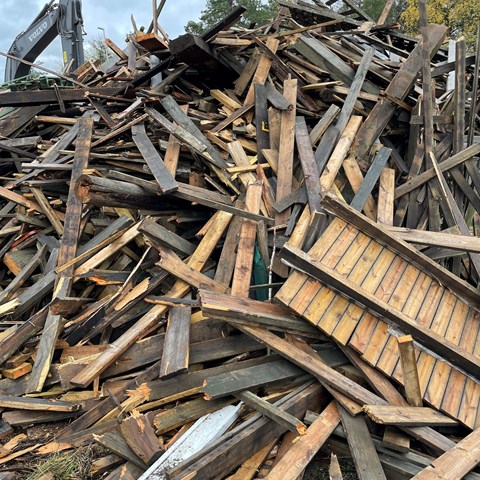Facts:
Project timetable: 2021-09-01 - 2024-08-31
Funders: Formas
Project participants SBT: Stergios Adamopoulos , Mikael Thyrel, Joran van Blokland
Participants: SLU, IVL Svenska Miljöinstitutet AB
Project budget: 3 990 517 SEK

With increasing focus on recycling, wood waste can increase its potential to generate secondary raw materials instead of incineration and landfilling. The quality of wood waste, as determined by the presence of material and
mainly chemical impurities, is essential to ensure a high quality, clean and safe recycling loop for particleboards or for other emerging recycling applications. With todays’ wood product manufacturing technologies, the presence of hazardous and persistent chemical pollutants cannot be avoided and limits the recyclability of wood waste in a circular economy, as these impurities could persist in sequential recycling loops. As wood waste comprises several types of wood types and products, along with different levels of contamination, this poses a complex problem that needs action from both the circular economy and non-toxic environment fields. The development of an automated on-line characterization system to distinguish chemically contaminated wood waste has become a high priority. Thus, the project proposes a neutron-based solution that goes beyond the current state of the art in providing a reliable separating function of non-toxic material flows. The results will be used to bridge the conflicting goals in
wood waste recycling and will increase the amount of wood waste that can safely be used in recycling. Environmental, economic and social impacts of the proposed solution are analyzed from a life-cycle perspective to
identify the best development options
Project timetable: 2021-09-01 - 2024-08-31
Funders: Formas
Project participants SBT: Stergios Adamopoulos , Mikael Thyrel, Joran van Blokland
Participants: SLU, IVL Svenska Miljöinstitutet AB
Project budget: 3 990 517 SEK